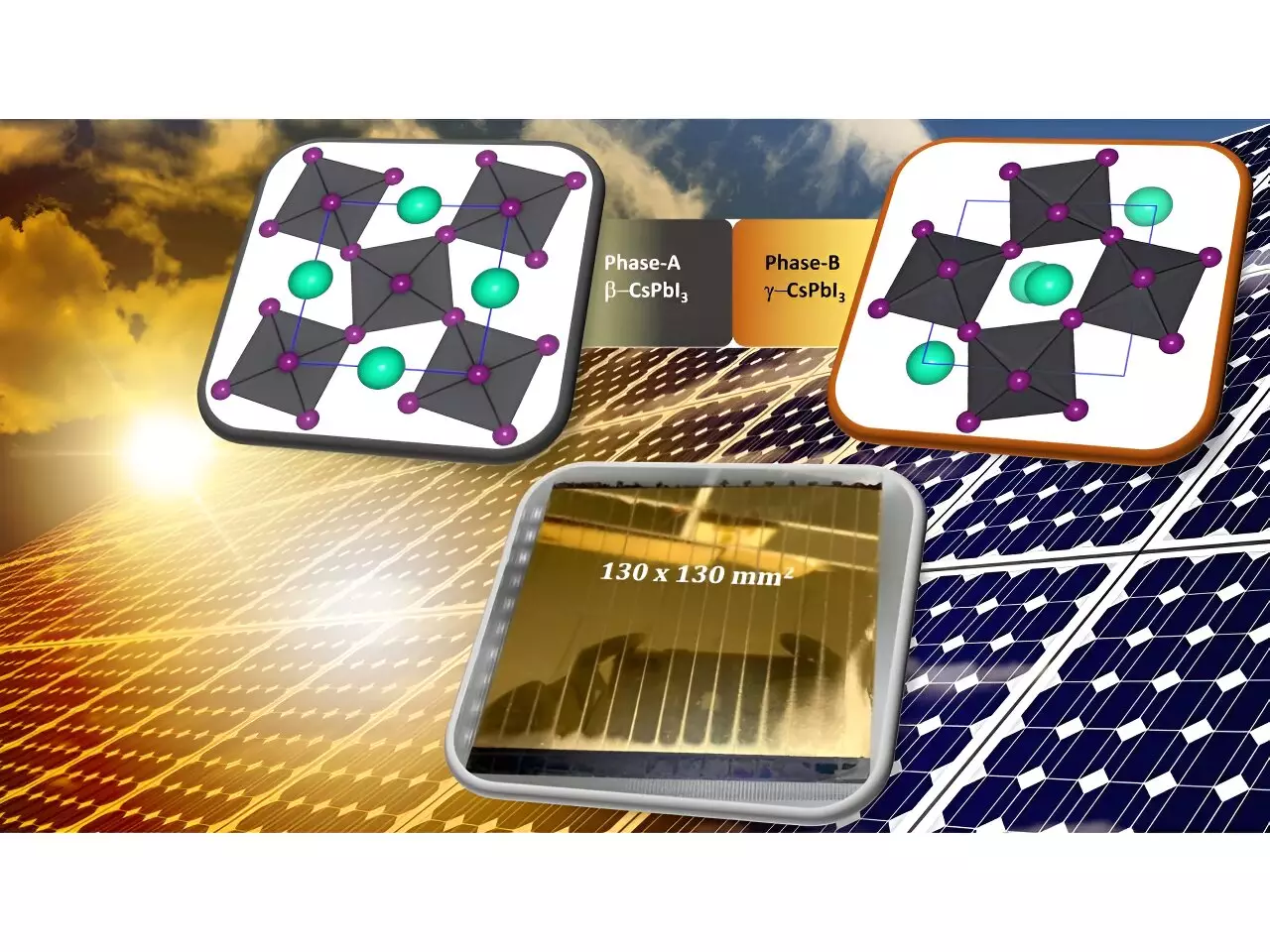Next-generation solar materials have shown great promise in terms of cost-effectiveness and sustainability compared to traditional silicon solar cells. However, one significant challenge remains – developing solar cells that are durable enough to withstand real-world conditions. In a groundbreaking study published in the journal Nature Energy, a team of international scientists, including Nelson Dzade from Penn State, have unveiled a new technique that addresses this issue. Their innovative approach simplifies the development of efficient and stable perovskite solar cells, which are renowned for their unique crystalline structure and exceptional light absorption capabilities.
Perovskite solar cells offer several advantages over their silicon counterparts. Notably, they can be manufactured at room temperature, requiring less energy and making the production process more affordable and sustainable. These factors contribute to the growing interest in perovskite technology as a promising candidate for solar energy applications. However, the current leading materials used in perovskite solar cells, such as hybrid organic-inorganic metal halides, have inherent vulnerabilities to moisture, oxygen, and heat, leading to rapid performance degradation in real-world conditions.
To overcome the challenges associated with environmental factors, researchers have explored all-inorganic perovskite materials like cesium lead iodide. This material exhibits excellent electrical properties and a greater tolerance to environmental conditions. However, it also possesses multiple phases with different crystalline structures, making it prone to converting into a non-photoactive phase at room temperature. This conversion introduces defects and hinders the efficiency of the solar cell.
In this study, the scientists aimed to create a stable and efficient perovskite solar cell by combining the two photoactive polymorphs of cesium lead iodide. This combination resulted in a phase-heterojunction, which effectively suppressed the transformation to the undesirable non-photoactive phase. Heterojunctions in solar devices involve stacking dissimilar semiconductor materials with varying optoelectronic properties. By leveraging this concept, the scientists succeeded in enhancing their solar cell’s ability to absorb energy from sunlight and convert it into electricity more efficiently.
Enhanced Efficiency and Stability
The researchers achieved a remarkable 21.59% power conversion efficiency with their fabricated device, one of the highest reported for this approach. Not only did the perovskite solar cells exhibit exceptional efficiency, but they also demonstrated excellent stability. After 200 hours of storage under ambient conditions, the devices retained more than 90% of their initial efficiency. These promising results highlight the potential of this approach for developing large-scale perovskite solar cell modules with reliable stability.
Nelson Dzade, a faculty member at Penn State, played a critical role in this study. He utilized atomic-scale modeling to analyze the structure and electronic properties of the phase-heterojunction. Dzade’s analysis revealed that bringing the two photoactive phases together created a stable and coherent interface structure. This structure facilitated efficient charge separation and transfer within the solar cell, contributing to its high efficiency.
The team developed a unique dual deposition method for fabricating the perovskite solar cells. This approach involved depositing one phase using a hot-air technique and the other phase using triple-source thermal evaporation. Additionally, they incorporated small quantities of molecular and organic additives during the deposition process, which further enhanced the electrical properties, efficiency, and stability of the solar cell. The researchers believe that this dual deposition technique has significant implications for fabricating highly efficient and stable perovskite solar cells in the future.
The success of the dual deposition technique opens up possibilities for the development of solar cells based on all-inorganic perovskites or other halide perovskite compositions. Future research will involve extending the technique to different compositions and focusing on enhancing the durability of the phase-heterojunction cells in real-world conditions. Another goal is scaling up the size of these solar cells to match the dimensions of conventional solar panels. With continued advancements, the researchers believe that it is feasible to achieve efficiencies beyond 25% in the near future.
This groundbreaking research represents a significant step forward in the development of perovskite solar cells. By addressing the challenge of material stability, the scientists have unlocked new possibilities for highly efficient and stable solar energy technologies. As the world continues to seek sustainable alternatives to traditional energy sources, advancements in perovskite solar cells offer great promise for a brighter and greener future.


Leave a Reply